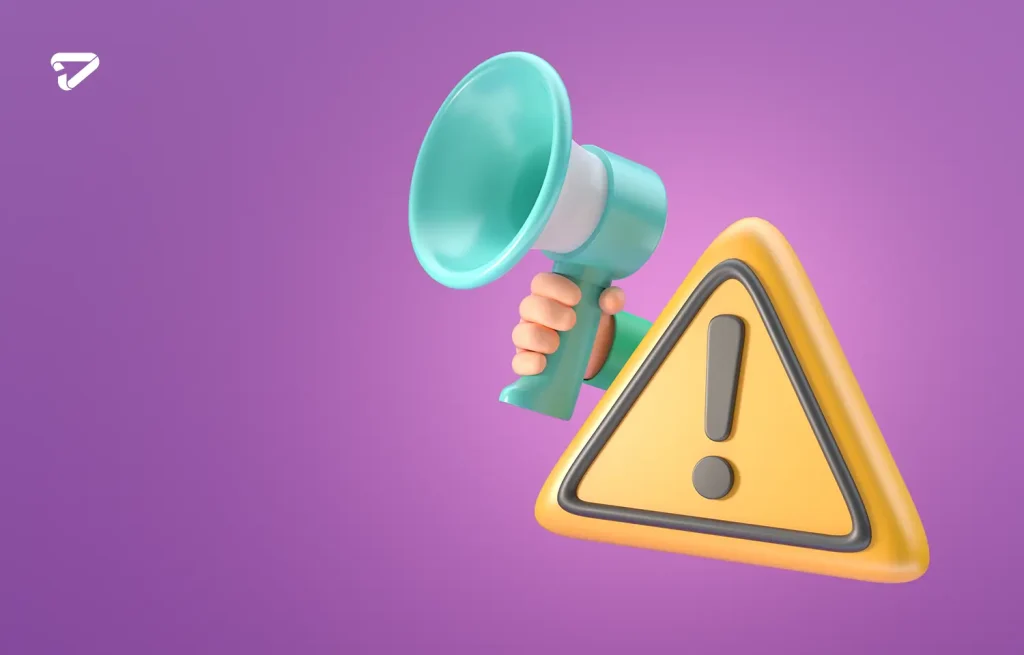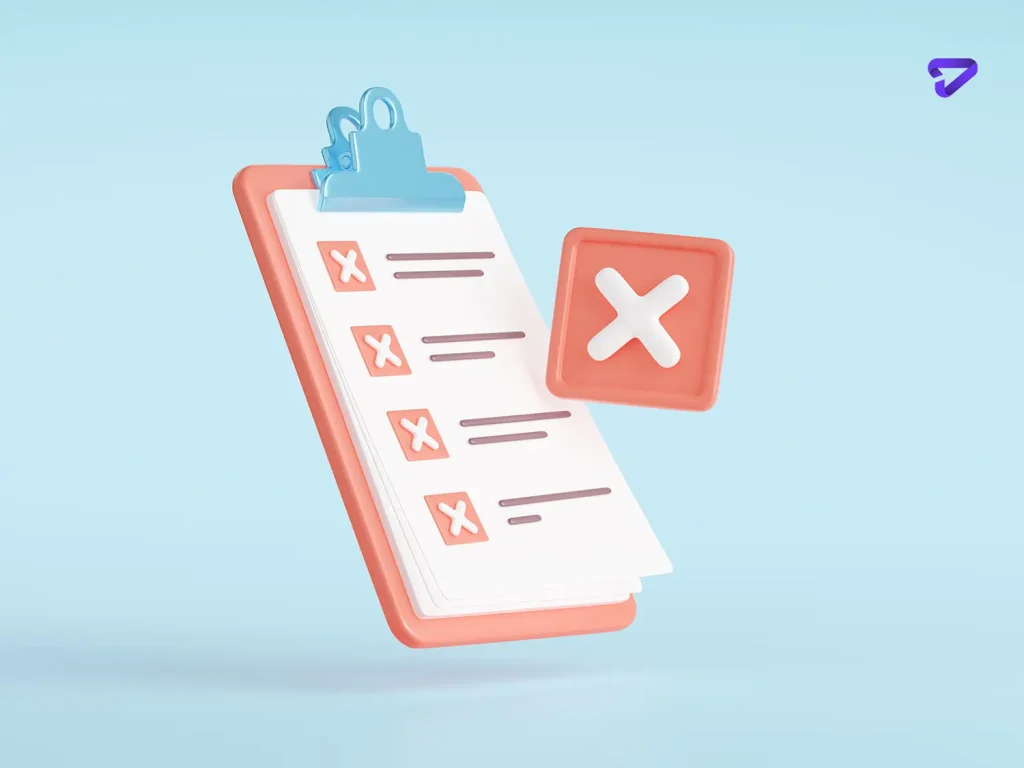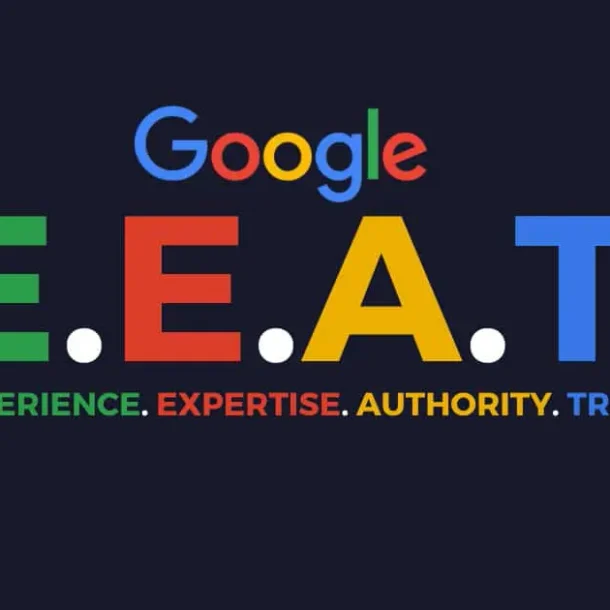
Are You Making These Content Marketing Mistakes? Find Out and Fix Them
Content Marketing Mistakes often include poor audience targeting, inconsistent posting schedules, neglecting analytics, and failing to engage with the audience effectively.
Content marketing in digital marketing is one of the most powerful tools in a business’s arsenal.
It’s an opportunity to establish authority, build trust, and connect with your target audience on a deeper level.
However, even the most well-intentioned content marketing efforts can fall flat if you’re making common mistakes.
Imagine you’re hosting a dinner party, and you’ve spent days planning the perfect menu and decorating your home to create a warm, inviting atmosphere.
But when your guests arrive, you realize you’ve forgotten to turn on the oven, and the main course is inedible. All that effort goes to waste because of a simple oversight.
The same principle applies to content marketing. You can invest countless hours and resources into creating high-quality content, but if you’re making critical mistakes, your efforts may be fruitless.
That’s why it’s crucial to identify and address these missteps before they undermine your content marketing strategy.
In this comprehensive guide, we’ll explore some of the most common content marketing mistakes businesses make and provide actionable solutions to help you course-correct.
From failing to understand your audience to neglecting content promotion, we’ll cover it all, so you can optimize your content marketing efforts and reap the rewards of a well-executed strategy.

Mistake #1: Not Understanding Your Audience
One of the most significant content marketing mistakes is failing to understand your target audience deeply.
Without a clear grasp of who you’re creating content for, your efforts are likely to miss the mark.
According to a study by the Content Marketing Institute, 41% of B2B content marketers cited “creating content that appeals to their audience” as one of their top challenges.
This statistic highlights the importance of truly knowing your audience and tailoring your content to their specific needs, interests, and preferences.
How to Fix This Mistake
Conduct Audience Research:
Gather data on your target audience’s demographics, psychographics, pain points, and content consumption habits.
Tools like Google Analytics, social media analytics, and customer surveys can provide valuable insights.
Create Buyer Personas:
Based on your research, develop detailed buyer personas that represent your ideal customers.
These fictional characters should embody the characteristics, goals, and challenges of your target audience.
Map Content to the Buyer’s Journey:
Align your content with the different stages of the buyer’s journey, from awareness to consideration to decision.
This ensures that you’re providing the right information at the right time, catering to your audience’s evolving needs.
Engage with Your Audience:
Participate in online communities, monitor social media conversations, and actively listen to feedback from your existing customers.
This direct interaction will deepen your understanding of your audience and inform your content strategy.
By truly understanding your audience, you can create content that resonates, addresses their pain points, and positions your brand as a trusted authority in your industry.
Mistake #2: Lacking a Documented Content Strategy
While it’s tempting to dive headfirst into content creation, failing to develop a documented content strategy is a recipe for disorganization and inefficiency.
Without a clear plan, your content efforts may lack direction, consistency, and measurable goals.
According to HubSpot’s State of Marketing Report, 66% of marketers who achieve superior return on investment (ROI) from their inbound marketing have a documented content strategy.
This statistic underscores the importance of a well-defined content strategy for achieving tangible results.
How to Fix This Mistake
Define Your Goals:
Identify specific, measurable, attainable, relevant, and time-bound (SMART) goals for your content marketing efforts.
These goals could include increasing website traffic, generating leads, or improving brand awareness.
Conduct a Content Audit:
Evaluate your existing content assets, identifying gaps, strengths, and areas for improvement.
This audit will inform your content strategy and help you prioritize your efforts.
Develop an Editorial Calendar:
Create a detailed editorial calendar that outlines the topics, formats, and publication schedule for your content.
This will ensure a consistent flow of high-quality content and help you stay organized.
Assign Roles and Responsibilities:
Clearly define the roles and responsibilities of your content team, including writers, editors, designers, and marketers.
This fosters accountability and streamlines the content creation and distribution process.
Establish Key Performance Indicators (KPIs):
Identify the metrics you’ll use to measure the success of your content marketing efforts, such as website traffic, lead generation, and engagement metrics.
Regular monitoring and analysis of these KPIs will help you refine your strategy and make data-driven decisions.
By documenting your content strategy and aligning your team around a shared vision, you’ll increase the chances of achieving your content marketing goals and maximizing the return on your investment.

Mistake #3: Neglecting Content Promotion
Creating high-quality content is only half the battle – you also need to promote it effectively to reach your target audience.
Failing to allocate sufficient resources and effort to content promotion is a common mistake that can severely limit the impact of your content marketing efforts.
According to a study by Semrush, only 19% of marketers spend more time promoting their content than creating it, despite the significant benefits of content promotion.
This oversight can result in your carefully crafted content going unnoticed, diminishing its potential to drive traffic, generate leads, and establish brand authority.
How to Fix This Mistake
Develop a Comprehensive Promotion Plan:
Identify the channels and tactics you’ll use to promote your content, such as social media, email marketing, influencer outreach, and paid advertising.
Create a detailed plan that outlines the specific steps and timelines for each promotion activity.
Leverage Social Media:
Utilize social media platforms strategically to share your content and engage with your target audience.
Encourage employees, brand advocates, and influencers to amplify your content, increasing its reach and visibility.
Implement Email Marketing:
Use email marketing to share your latest content with your subscriber list.
Segment your email list and tailor your messaging to ensure relevance and maximize engagement.
Repurpose and Redistribute:
Repurpose your content into different formats (e.g., infographics, videos, podcasts) and redistribute it across various channels to extend its lifespan and reach new audiences.
Invest in Paid Promotion: Consider allocating a portion of your marketing budget to paid promotion tactics, such as social media advertising, sponsored content, or influencer partnerships.
This can boost your content’s visibility and drive targeted traffic to your website.
By dedicating adequate resources and effort to content promotion, you’ll maximize the impact of your content marketing investments and increase the chances of achieving your desired results.
Mistake #4: Ignoring Content Optimization
In today’s digital landscape, optimizing your content for search engines and user experience is essential for ensuring its discoverability and engagement.
Ignoring content optimization can significantly limit the reach and effectiveness of your content marketing efforts.
According to a study by BrightEdge, 53% of marketers cite “lack of integration with SEO” as a significant challenge in their content marketing efforts.
This statistic highlights the importance of aligning your content strategy with search engine optimization (SEO) best practices.
How to Fix This Mistake
Conduct Keyword Research:
Identify relevant keywords and phrases that your target audience is searching for.
Incorporate these keywords naturally into your content, ensuring they align with the context and provide value to the reader.
Optimize for On-Page SEO:
Follow best practices for on-page SEO, such as optimizing titles, meta descriptions, headings, and image alt text.
These elements help search engines understand the content and improve its visibility in search results.
Enhance User Experience:
Ensure your content is easy to read, visually appealing, and mobile-friendly.
Incorporate elements like subheadings, bullet points, and visuals to break up text and improve readability.
Leverage Internal Linking:
Link relevant content pieces within your website to create a more cohesive user experience and improve the overall structure and discoverability of your content.
Monitor and Analyze Performance:
Regularly track and analyze the performance of your optimized content using tools like Google Analytics and Google Search Console.
This data will help you identify areas for improvement and refine your optimization strategy.

Mistake #5: Failing to Repurpose and Reuse Content
One of the most common content marketing mistakes is failing to repurpose and reuse existing content effectively.
By neglecting this practice, you’re missing out on valuable opportunities to extend the reach and lifespan of your content, as well as maximize your content creation efforts.
According to a study by Curata, 32% of marketers cite “reusing and repurposing existing content” as one of their top content marketing priorities.
This statistic highlights the growing recognition of the benefits of repurposing content among content marketers.
How to Fix This Mistake
Identify Evergreen Content:
Evaluate your existing content library and identify evergreen pieces that are timeless and relevant.
These assets are prime candidates for repurposing and reusing.
Repurpose into Different Formats:
Transform your content into various formats, such as blog posts into videos, infographics, podcasts, or presentations.
This caters to different content consumption preferences and helps you reach new audiences.
Update and Refresh:
Revisit older content pieces and update them with fresh information, new statistics, or additional insights.
This breathes new life into your content and ensures it remains relevant and valuable.
Repackage and Redistribute:
Bundle related content pieces into comprehensive guides, e-books, or resource libraries.
This consolidates your content and provides a more comprehensive resource for your audience.
Promote Repurposed Content:
Develop a promotion strategy for your repurposed content, leveraging channels like social media, email marketing, and paid advertising.
This extends the reach and visibility of your content efforts.
By repurposing and reusing your existing content, you can maximize the return on your content creation investments, reach new audiences, and provide a more comprehensive and engaging content experience for your target audience.
Mistake #6: Neglecting Content Measurement and Analytics
Failing to measure and analyze the performance of your content marketing efforts is a critical mistake that can prevent you from understanding the impact of your investments and making data-driven decisions to optimize your strategy.
According to a report by the Content Marketing Institute, 58% of B2C content marketers cited “measuring the return on investment (ROI) of content marketing” as one of their top challenges.
This statistic underscores the importance of implementing effective measurement and analytics practices to gauge the success of your content marketing initiatives.
How to Fix This Mistake
Define Key Performance Indicators (KPIs):
Identify the specific metrics that align with your content marketing goals, such as website traffic, lead generation, engagement rates, and conversion rates.
These KPIs will serve as benchmarks for measuring success.
Implement Tracking and Measurement Tools:
Utilize analytics tools like Google Analytics, social media analytics platforms, and content performance tracking software to gather data on your content’s performance across various channels.
Establish Baselines and Benchmarks:
Set baselines and benchmarks for your KPIs based on historical data or industry standards.
This will provide a reference point for evaluating the impact of your content marketing efforts.
Conduct Regular Analysis and Reporting:
Regularly analyze and report on your content performance data, identifying trends, patterns, and areas for improvement.
This data-driven approach will inform your content strategy and help you make more effective decisions.
Continuously Optimize and Iterate:
Based on your performance analysis, continuously optimize and refine your content marketing strategy.
Test different formats, topics, promotion channels, and tactics to identify what resonates best with your target audience.
By prioritizing content measurement and analytics, you’ll gain valuable insights into the effectiveness of your content marketing efforts, enabling you to make data-driven decisions, optimize your strategy, and maximize the return on your investments.

Mistake #7: Overlooking Content Governance and Maintenance
As your content library grows, overlooking content governance and maintenance can lead to a disorganized and outdated content ecosystem, diminishing the effectiveness of your content marketing efforts.
According to a study by Acrolinx, 63% of companies lack a coherent content strategy, leading to inconsistencies and inefficiencies in their content creation and management processes.
This highlights the importance of implementing robust content governance and maintenance practices.
How to Fix This Mistake
Establish Content Guidelines and Standards:
Develop a set of guidelines and standards that define your brand’s voice, tone, style, and content quality expectations.
These guidelines should be followed consistently across all content creation efforts.
Implement a Content Management System (CMS):
Invest in a robust CMS that allows you to organize, store, and manage your content assets efficiently.
A CMS streamlines content creation, collaboration, and publishing processes.
Conduct Regular Content Audits: Periodically audit your content library to identify outdated, irrelevant, or low-performing content.
This will help you prioritize content updates, revisions, or retirement decisions.
Assign Content Ownership and Responsibilities:
Clearly define content ownership and responsibilities within your team, ensuring that each content asset has a designated owner responsible for its maintenance and updates.
Develop a Content Lifecycle Management Process:
Implement a process for managing the lifecycle of your content assets, from creation to publication, maintenance, and eventual retirement or archiving.
By prioritizing content governance and maintenance, you’ll ensure consistency, relevance, and quality across your content ecosystem, enhancing the overall effectiveness of your content marketing strategy and providing a seamless experience for your target audience.
Mistake #8: Ignoring Your Competitors’ Content Strategies
While it’s essential to focus on creating valuable, audience-centric content, overlooking your competitors’ content marketing efforts can put you at a significant disadvantage.
Failing to monitor and analyze your competitors’ content strategies can lead to missed opportunities and a lack of differentiation in a saturated market.
According to a study by Content Marketing Institute, 62% of the most successful B2B content marketers prioritize researching their competitors’ content to identify gaps and opportunities.
This statistic underscores the importance of keeping a close eye on your competitors’ content strategies and using those insights to inform and refine your own approach.
How to Fix This Mistake
Identify Key Competitors:
Make a list of your top competitors in the industry, including direct and indirect competitors. These are the companies you’ll be monitoring for their content marketing efforts.
Conduct Competitor Content Audits:
Regularly review your competitors’ websites, blogs, social media channels, and other content platforms.
Analyze the types of content they’re producing, the topics they’re covering, and the formats they’re using.
Identify Content Gaps and Opportunities:
Look for content gaps or topics that your competitors are neglecting or not covering in-depth.
These areas represent opportunities for you to create unique, valuable content that sets you apart from the competition.
Monitor Content Performance:
Use tools like BuzzSumo, Ahrefs, or Semrush to track the performance of your competitors’ content.
Identify their top-performing pieces and analyze what makes them successful.
Differentiate Your Content Strategy:
Based on your competitor analysis, develop a content strategy that differentiates your brand and provides a unique value proposition to your target audience.
Focus on creating content that addresses their specific pain points, interests, and preferences in a way your competitors are not.
A common content marketing mistake is neglecting to develop a detailed content marketing plan, which can lead to inconsistent messaging and missed opportunities for audience engagement.
Continuously Iterate and Adapt:
Content marketing is an ever-evolving landscape, so it’s crucial to continuously monitor your competitors’ strategies and adapt your own approach accordingly.
Stay agile and be prepared to adjust your content plans based on new trends or shifts in the competitive landscape.
By keeping a close eye on your competitors’ content marketing efforts, you’ll gain valuable insights that can help you identify gaps, differentiate your content, and stay ahead of the curve in your industry.
Ignoring your competitors’ strategies can leave you playing catch-up, while proactively monitoring and analyzing their approach can give you a competitive edge.

Mistake #9: Overlooking Content Accessibility and Inclusivity
In today’s diverse and inclusive digital landscape, failing to consider content accessibility and inclusivity can alienate a significant portion of your target audience, limit your content’s reach, and undermine your brand’s reputation.
According to a report by WebAIM, an estimated 98.1% of the top 1 million websites had detectable accessibility failures in 2021.
This statistic highlights the widespread neglect of accessibility considerations in content creation, potentially excluding individuals with disabilities or diverse backgrounds from fully engaging with and benefiting from the content.
How to Fix This Mistake
Understand Web Accessibility Guidelines:
Familiarize yourself with the Web Content Accessibility Guidelines (WCAG) established by the World Wide Web Consortium (W3C).
These guidelines provide standards and best practices for making web content more accessible to individuals with disabilities.
Optimize for Screen Readers:
Ensure your content is compatible with screen readers by providing appropriate alternative text for images, using proper headings and structure, and avoiding complex layouts or designs that may be difficult to navigate.
Consider Language and Cultural Diversity:
Be mindful of the language and cultural perspectives represented in your content.
Avoid using idioms, slang, or references that may be confusing or offensive to certain audiences.
Strive for inclusive language that resonates with diverse backgrounds.
Provide Transcripts and Captions:
For multimedia content, such as videos or podcasts, provide transcripts and closed captions to make the content accessible to individuals with hearing impairments or those who prefer to consume content in written form.
Test and Get Feedback:
Regularly test your content for accessibility and usability with individuals from diverse backgrounds and abilities.
Solicit feedback and incorporate their insights to continuously improve the accessibility and inclusivity of your content.
By prioritizing content accessibility and inclusivity, you’ll not only reach a wider audience but also demonstrate your brand’s commitment to diversity, equity, and inclusion.
This can enhance your reputation, build trust with your audience, and ultimately drive better engagement and business outcomes.
Mistake #10: Failing to Stay Current with Content Marketing Trends and Best Practices
The content marketing landscape is constantly evolving, with new trends, technologies, and best practices emerging regularly.
Failing to stay current with these developments can render your content marketing efforts outdated and ineffective, causing you to fall behind your competitors and miss out on opportunities to engage your target audience more effectively.
According to a study by Content Marketing Institute, 58% of B2B content marketers cited “staying abreast of emerging content marketing technology and trends” as a significant challenge.
This statistic highlights the importance of continuously learning and adapting to remain relevant and competitive in the content marketing space.
How to Fix This Mistake
Subscribe to Industry Publications and Blogs:
Stay informed by subscribing to reputable industry publications, blogs, and newsletters that cover content marketing trends, best practices, and emerging technologies.
Attend Conferences and Webinars:
Participate in content marketing conferences, webinars, and online events to learn from industry experts, gain insights into the latest trends, and network with like-minded professionals.
Join Professional Communities and Groups:
Become an active member of online communities and groups dedicated to content marketing.
Engage in discussions, share knowledge, and learn from the experiences and perspectives of other professionals in the field.
Experiment with New Content Formats and Channels:
Don’t be afraid to experiment with new content formats, such as interactive content, augmented reality, or voice-enabled experiences.
Test different channels and platforms to reach your audience where they engage most.
Continuously Analyze and Optimize:
Regularly analyze the performance of your content marketing efforts and adjust your strategy based on the latest trends, best practices, and audience preferences.
Continuously optimize your approach to stay ahead of the curve.
By staying current with content marketing trends and best practices, you’ll be better equipped to create engaging, relevant, and effective content that resonates with your target audience.
This proactive approach will help you stay competitive, differentiate your brand, and maximize the impact of your content marketing investments.

Conclusion
Understanding the types of content marketing, such as blogs, videos, and social media, is essential to avoid common mistakes like lack of variety and misalignment with audience preferences.
if you need more expert tips about content marketing read hubspot blog.
Content marketing is a powerful tool for building brand awareness, establishing thought leadership, and driving business growth.
However, avoiding common mistakes is crucial to maximizing the impact of your content marketing efforts.
Throughout this comprehensive guide, we’ve explored seven critical content marketing mistakes businesses often make, including failing to understand their audience, lacking a documented content strategy, neglecting content promotion, ignoring content optimization, neglecting content repurposing, overlooking measurement and analytics, and disregarding content governance and maintenance.
By addressing these mistakes and implementing the provided solutions, you’ll be well-equipped to create a content marketing strategy that resonates with your target audience, drives engagement, and delivers measurable results.
Remember, content marketing is an ongoing journey, and continuous improvement is key.
Embrace a data-driven approach, stay adaptable, and consistently refine your strategy based on evolving audience needs and industry trends.
Investing time and resources into fixing these content marketing mistakes will undoubtedly pay dividends in the form of increased brand awareness, lead generation, and customer loyalty.
So, take action today and embark on a path towards content creation excellence, unlocking the full potential of this powerful tool for your business by using Danabak agency content marketing services.
FAQs
How do I know if my content marketing efforts are effective?
To evaluate the effectiveness of your content marketing, you need to define clear goals and key performance indicators (KPIs), such as website traffic, lead generation, or engagement metrics.
Regularly track and analyze these KPIs to identify areas for improvement and measure the return on your content marketing investments.
How often should I publish new content?
There is no one-size-fits-all answer to content publishing frequency. It depends on your industry, audience, resources, and goals.
Generally, it’s recommended to publish high-quality content consistently, whether that’s weekly, bi-weekly, or monthly, to maintain audience engagement and search engine visibility.
Should I focus on long-form or short-form content?
Both long-form and short-form content have their place in a well-rounded content marketing strategy.
Long-form content (e.g., blog posts, guides, whitepapers) is ideal for in-depth exploration of topics and establishing thought leadership.
Short-form content (e.g., social media posts, infographics) is great for engagement and quick consumption.
How can I ensure my content is optimized for search engines?
To optimize your content for search engines, conduct thorough keyword research, incorporate relevant keywords naturally into your content, follow on-page SEO best practices (titles, meta descriptions, headings, etc.), and build high-quality backlinks from reputable sources.
How can I promote my content effectively?
Effective content promotion involves a multi-channel approach, including social media sharing, email marketing, influencer outreach, paid advertising, and content syndication.
Additionally, repurposing content into different formats and leveraging employee advocacy can amplify your reach and visibility.








